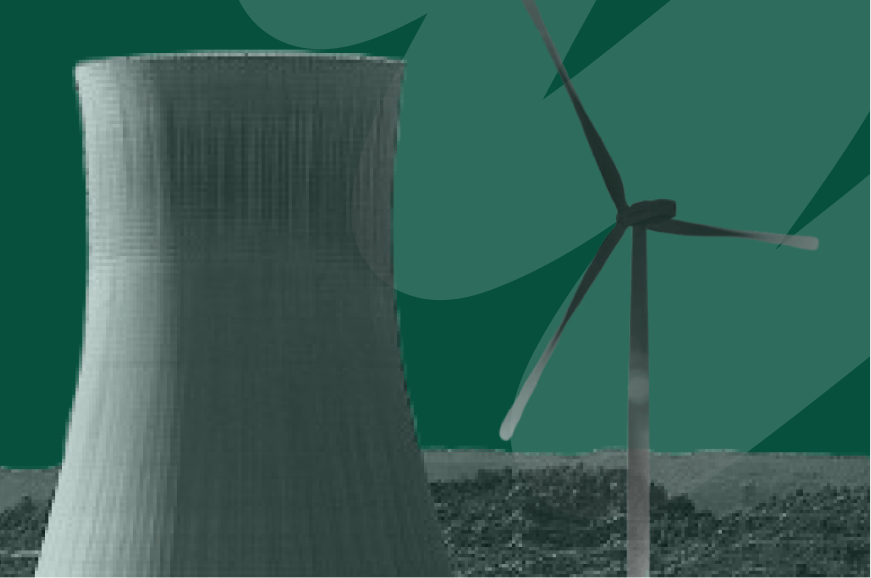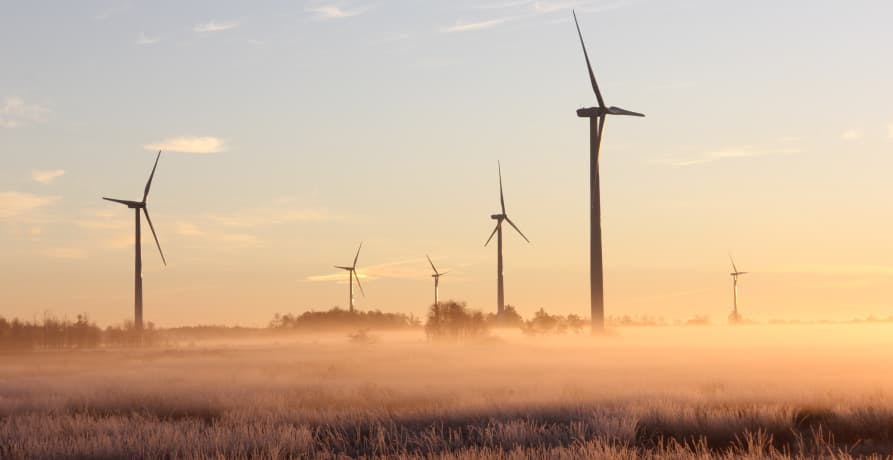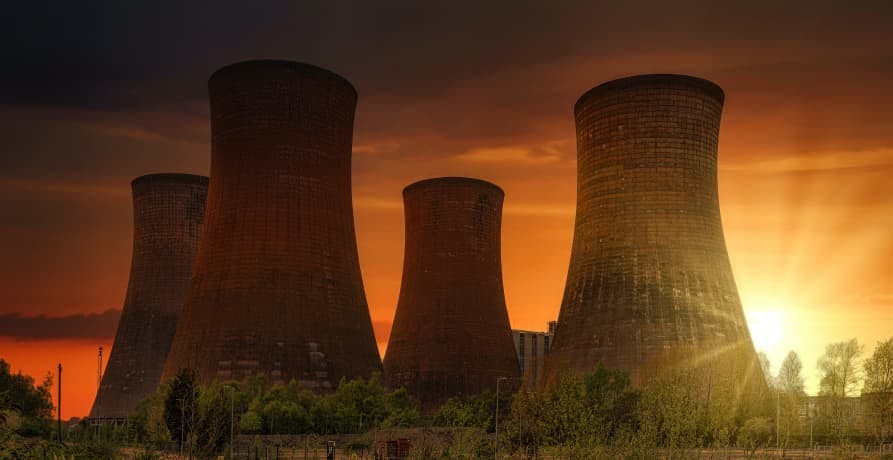
California Climate Accountability Package: SB253, SB261, & SB252
What is the California Climate Accountability Package, and how do SB 253 and SB 261 (SB 219), and SB 252 help the state work towards their environmental goals?
ESG / CSR
Industries



In 2024, global investment in clean energy reached $2.1 trillion, outpacing fossil fuel spending. This shift reflects a broader transition: governments, businesses, and consumers are increasingly recognizing that the future of energy lies in sources that are low-carbon, sustainable, and economically viable.
But what exactly is clean energy? While often used interchangeably with renewable energy, the term has a broader scope. Clean energy refers to energy sources that produce little to no greenhouse gas emissions during operation, reducing environmental harm while ensuring long-term energy security. This includes solar and wind power, but also nuclear energy, and advanced efficiency technologies that minimize overall energy consumption.
In this article, we’ll explore:
As the world moves toward a low-carbon future, understanding clean energy has never been more crucial. Let’s break down what it means, why it matters, and how it’s shaping the future of energy.
There is often confusion between the terms clean energy, renewable energy, and green energy. The table below outlines the key differences:
| Term | Definition | Examples |
|---|---|---|
| Clean Energy | Energy sources that generate little to no greenhouse gas emissions during operation. | Solar, wind, hydropower, nuclear, energy efficiency |
| Renewable Energy | Energy derived from sources that naturally replenish over time. | Solar, wind, hydropower, geothermal, biomass |
| Green Energy | A subset of renewable energy that is considered environmentally friendly and has minimal ecosystem disruption. | Solar, wind, small-scale hydropower, geothermal |
For example, biomass is renewable because it comes from organic material that can regrow, but its combustion can produce emissions, making it not entirely clean. Similarly, large-scale hydropower is renewable but not always considered "green" due to environmental concerns such as deforestation and water ecosystem disruption.
Clean energy encompasses not only how energy is produced but also how it is used. Energy efficiency involves using less energy to perform the same task, thereby reducing energy waste. This approach is a cornerstone of many sustainable energy strategies. According to the International Energy Agency (IEA), increasing energy efficiency could achieve 40% of the greenhouse gas emission reductions needed to meet the goals of the Paris Agreement.
Examples of energy efficiency include:
While solar and wind farms grab headlines, energy efficiency is often the fastest and cheapest way to reduce emissions.
Clean energy comes from a variety of sources, each with its own advantages and challenges. While solar and wind power are the most recognized, other sources such as hydropower, geothermal energy, nuclear power, and emerging technologies like green hydrogen also play a crucial role in decarbonizing the global energy system.
Clean energy encompasses various sources that produce minimal or no greenhouse gas emissions during operation. Below is an overview of the primary clean energy sources:
| Energy Source | How It Works | Advantages | Challenges |
|---|---|---|---|
| Solar Energy | Photovoltaic (PV) panels convert sunlight into electricity; CSP uses mirrors to focus sunlight | Zero emissions, scalable, declining costs | Intermittency, land use, need for energy storage |
| Wind Energy | Onshore and offshore turbines convert wind energy into electricity | Zero emissions, offshore wind has higher efficiency, declining costs | Intermittency, wildlife impacts, public opposition |
| Hydropower | Dam-based and run-of-river systems generate electricity from flowing water | Reliable, long lifespan, flexible power output | Environmental concerns, displacement, drought vulnerability |
| Geothermal Energy | Extracts heat from Earth's interior to generate steam and produce electricity | Stable power output, small land footprint, low emissions | Geographic limitations, high upfront costs, seismic risks |
| Nuclear Energy | Nuclear fission splits atomic nuclei to generate heat and produce steam | High energy density, continuous power, low carbon emissions | Radioactive waste, high capital costs, safety concerns |
| Green Hydrogen | Electrolysis splits water into hydrogen and oxygen using renewable energy | Zero emissions, diverse applications in energy and industry | High production costs, limited infrastructure, energy-intensive process |
| Energy Storage Solutions | Battery technologies (lithium-ion, solid-state); pumped hydro stores excess energy | Improves grid stability, enables renewable integration, enhances energy security | Material supply constraints, efficiency losses, high initial investment |
Solar energy is now the fastest-growing source of electricity, with global installed capacity surpassing 2 terawatts (TW) in 2024. It accounted for more than three-quarters of all new renewable energy installations in 2023, driven by record growth in China, the US, and Europe.
While solar is now the cheapest source of new power in most regions, its rapid expansion poses challenges, including supply chain bottlenecks, rising grid integration costs, and increasing curtailment of excess generation. Advances in energy storage and next-generation solar technologies, such as perovskite cells, will be critical in ensuring solar’s continued scalability and reliability.
How it works:
Advantages:
Challenges:
Wind energy is set for a major resurgence, with its global expansion rate projected to double between 2024 and 2030, after a temporary slowdown caused by supply chain disruptions, inflation-driven cost spikes, and permitting delays in key markets like the US and Europe.
In 2023, global installed wind capacity surpassed 1 terawatt (TW), with China leading installations, accounting for over 65% of new capacity. Offshore wind is playing an increasingly important role, particularly in Europe, where it is expected to contribute at least one-third of total wind power generation by 2030.
However, challenges remain - rising material costs, grid infrastructure limitations, and local opposition continue to pose hurdles. To counteract these barriers, governments are expanding offshore leasing, increasing grid investment, and implementing more favorable market policies to accelerate deployment.
How it works:
Advantages:
Challenges:
Hydropower remains the world's largest source of renewable electricity, supplying approximately 15 percent of global electricity in 2023. While historically dominant, its share is gradually declining as solar and wind grow at a faster rate. In regions such as China, Canada, and Brazil, large-scale hydropower plays a crucial role in grid stability, providing flexible generation that can compensate for fluctuations in variable renewables. However, climate change-induced droughts and ecosystem concerns are increasingly raising questions about the long-term sustainability of new dam projects.
How it works:
Advantages:
Challenges:
Geothermal energy remains a stable but relatively small contributor to global electricity generation, with installed capacity exceeding 15 gigawatts (GW) in 2024. While growth has been steady, geothermal still lags behind solar and wind due to high upfront costs and geographic limitations. Countries like Indonesia, the Philippines, and Kenya are leading capacity expansions, capitalizing on strong volcanic activity. Advances in enhanced geothermal systems (EGS) could unlock new resources in non-traditional regions, but commercial deployment remains in the early stages.
How it works:
Advantages:
Challenges:
Nuclear energy remains a key source of low-carbon electricity, with around 440 commercial reactors operating across 30 countries, providing approximately 9% of global electricity in 2024. Total installed capacity stands at about 390 gigawatts of electric (GWe), with new reactors under construction in China, India, and Europe.
While nuclear offers reliable, baseload power with no direct emissions, challenges such as high capital costs, lengthy construction timelines, and nuclear waste disposal remain barriers to expansion. Emerging small modular reactors (SMRs) may offer a more flexible and cost-effective alternative, though large-scale deployment is still years away.
How it works:
Advantages:
Challenges:
Green hydrogen:
Energy storage solutions:
Pumped hydro storage: Excess electricity is used to pump water uphill, releasing it generates electricity during high-demand periods

The transition to clean energy is being driven by a combination of environmental, economic, and social benefits. As governments and businesses accelerate investment in renewables, these advantages are becoming increasingly clear.
One of the primary drivers of clean energy adoption is its role in reducing greenhouse gas emissions. The energy sector accounts for nearly 75% of global CO2 emissions, primarily from burning fossil fuels. Clean energy sources - particularly solar, wind, and nuclear - produce little to no emissions during operation, making them crucial for mitigating climate change.
Beyond CO2 reduction, clean energy also helps address air and water pollution. Fossil fuel combustion releases particulate matter, nitrogen oxides, and sulfur dioxide, contributing to respiratory diseases and premature deaths. Studies show that transitioning to a clean energy system could prevent millions of deaths annually caused by air pollution-related illnesses.
Additionally, renewables like solar and wind require minimal water compared to coal, gas, and nuclear plants, which rely on large volumes for cooling. This makes clean energy a more sustainable choice in water-scarce regions.
Clean energy is a major economic opportunity. Global investment in renewables hit a record $2.1 trillion in 2024, outpacing fossil fuel investment.
The sector is also a key driver of job creation. In 2024, the global renewable energy workforce surpassed 16.2 million jobs, with solar PV accounting for nearly 7.2 million of these roles. Clean energy jobs span a wide range of industries, from manufacturing and construction to research and grid modernization. Countries leading the clean energy transition - such as China, the US, and the EU - are seeing strong employment growth in these sectors, reinforcing the economic potential of renewables.
Fossil fuel markets are highly volatile, with price fluctuations driven by geopolitical tensions, supply chain disruptions, and market speculation. In contrast, clean energy sources like wind and solar rely on free, abundant natural resources, making them more predictable and cost-stable over time.
The 2022 energy crisis, triggered by the Russia-Ukraine war, underscored the risks of dependence on fossil fuel imports. European nations rapidly expanded their renewable energy capacity, reducing reliance on Russian gas and enhancing long-term energy security. Countries that invest in clean energy infrastructure gain greater energy independence, reducing exposure to global fuel price spikes.
Advances in clean energy technology are driving improvements in grid reliability, energy storage, and system flexibility. Modern grids increasingly integrate smart meters, AI-driven forecasting, and battery storage, allowing them to handle variable renewable generation more effectively.
Additionally, innovations such as green hydrogen, small modular reactors (SMRs), and next-generation battery storage are expanding the role of clean energy beyond electricity generation. These technologies have the potential to decarbonize heavy industry, long-haul transport, and energy storage, addressing some of the hardest-to-abate sectors in the clean energy transition.
Governments worldwide are accelerating the shift to clean energy, but regional approaches differ based on policy frameworks, infrastructure, and resource availability. Below, we explore how four of the world’s leading regions in clean energy - the UK, US, EU, and China - are driving the transition, assessing their progress and the challenges they face.
The UK has emerged as a global leader in offshore wind, generating over 40% of its electricity from renewables in 2024. The country’s Net Zero Strategy aims for a 100 percent decarbonized power sector by 2035, with offshore wind as the backbone of this transition.
Key developments:
The US clean energy transition is facing significant headwinds under the Trump administration. While many of the Inflation Reduction Act (IRA) incentives remain in place, their future is uncertain as the White House seeks to pause or weaken clean energy programs. Federal support for renewables, EVs, and grid modernization is being scaled back, while fossil fuel production is being prioritized. Despite this shift, state-level policies, market forces, and private investment continue to drive clean energy expansion.
Key developments:
Challenges:
The EU leads the world in climate policy and clean energy deployment, aiming for 55% emissions reduction by 2030 and net-zero by 2050. The REPowerEU Plan, introduced after Russia’s invasion of Ukraine, has accelerated efforts to cut fossil fuel reliance.
Key developments:
China is by far the world’s largest clean energy investor, more than the total of the US, the UK, and the EU combined. In fact, the country has already met its 2030 clean energy targets ahead of schedule, significantly reducing reliance on coal.
Key developments:
| Region | Key Developments | Challenges |
|---|---|---|
| United Kingdom | Largest offshore wind market in Europe (14.7 GW installed, target 50 GW by 2030); Investment in new nuclear projects (Hinkley Point C, Sizewell C) | Grid constraints, planning delays, investment uncertainty |
| United States | Federal rollbacks on clean energy incentives; State-level investments keeping renewables growing; Slower solar (30 GW) and wind (3.1 GW) expansion due to regulatory uncertainty | Regulatory uncertainty, offshore wind and EV funding freeze, fossil fuel expansion |
| European Union | 65.5 GW new solar in 2024; 16.4 GW new wind; EU doubling investment in green hydrogen (€712M in H1 2024) | Slow permitting, supply chain dependencies, opposition to onshore wind |
| China | Installed 277 GW solar, 80 GW wind in 2024; Largest hydropower fleet (400 GW); Leading global EV and battery production | Coal reliance remains high, grid bottlenecks slowing renewable integration |

Despite the rapid growth of clean energy, several key challenges continue to slow down deployment. These barriers range from policy and regulatory hurdles to technological limitations and infrastructure constraints. Overcoming these obstacles will be crucial to accelerating the transition to a low-carbon energy system.
Government support plays a critical role in the growth of clean energy, but shifting policies and inconsistent regulations create uncertainty for investors and developers. The US is currently facing federal rollbacks on clean energy incentives, while the EU struggles with slow permitting processes that delay wind and solar projects. Meanwhile, in some emerging markets, a lack of clear renewable energy policies and financing mechanisms is limiting new investments.
Many countries are struggling with aging grid infrastructure, making it difficult to integrate large amounts of variable renewable energy.
The clean energy industry relies on critical minerals like lithium, cobalt, and rare earth elements, which are concentrated in a few countries. China dominates the supply chain for solar panels and batteries, raising concerns over geopolitical risks and trade restrictions.
While clean energy is widely supported, local opposition can delay or block projects:
Governments and developers are working on better community engagement strategies, as well as technological solutions such as floating solar and offshore wind farms located further from shore.
Although global investment in renewables is at an all-time high, some markets still struggle to attract funding:
New financing models, such as green bonds, blended finance, and carbon pricing mechanisms, are helping to close the investment gap, but policy support remains critical.
The clean energy sector is evolving rapidly, driven by technological advancements, declining costs, and growing global demand for sustainable solutions. While challenges remain, the long-term trajectory for renewables, energy storage, and emerging technologies is promising. Here’s what to expect in the coming years.
Solar and wind are now the cheapest sources of new electricity in most countries, and their deployment is expected to continue at record levels.
Energy storage is crucial for addressing the intermittency of renewables, and breakthroughs in battery technology are making it more viable.
Hydrogen is emerging as a key clean fuel for sectors that are difficult to electrify, such as steelmaking, shipping, and aviation.
While controversial, nuclear power is regaining momentum as a reliable low-carbon energy source.
Other emerging technologies include:
Government policies and financial markets will play a crucial role in determining the pace of the clean energy transition.
As businesses face increasing pressure to reduce emissions and transition to cleaner energy sources, Greenly provides the tools and expertise needed to navigate this shift effectively. Our platform helps companies measure, manage, and reduce their carbon footprint through data-driven insights and tailored sustainability strategies.
Greenly’s suite of carbon management services include:
By leveraging real-time emissions data, AI-powered insights, and expert guidance, Greenly enables businesses to make informed decisions about clean energy adoption. Whether you’re looking to improve energy efficiency, transition to renewables, or achieve sustainability ambitions, our platform provides the tools to drive measurable impact. Get in touch with Greenly today to find out more.